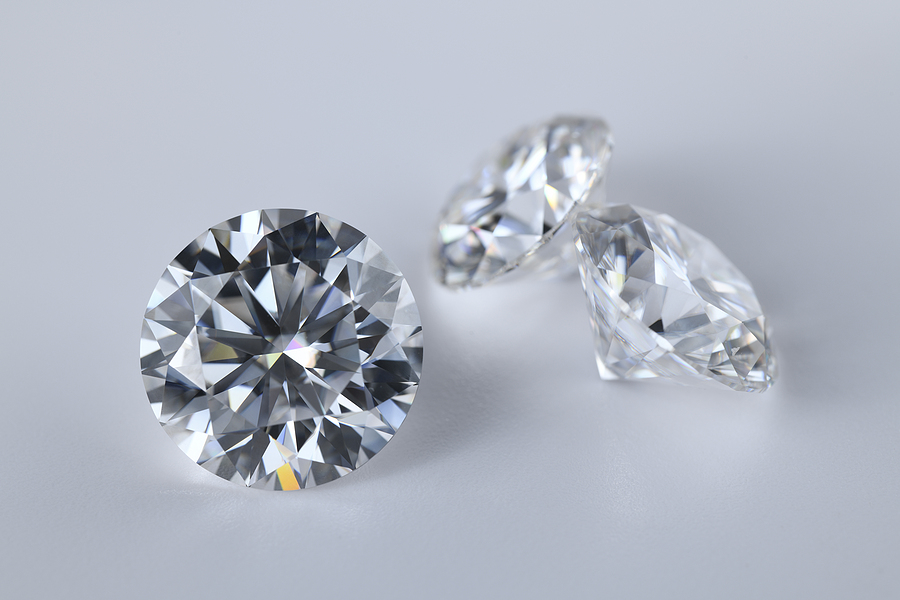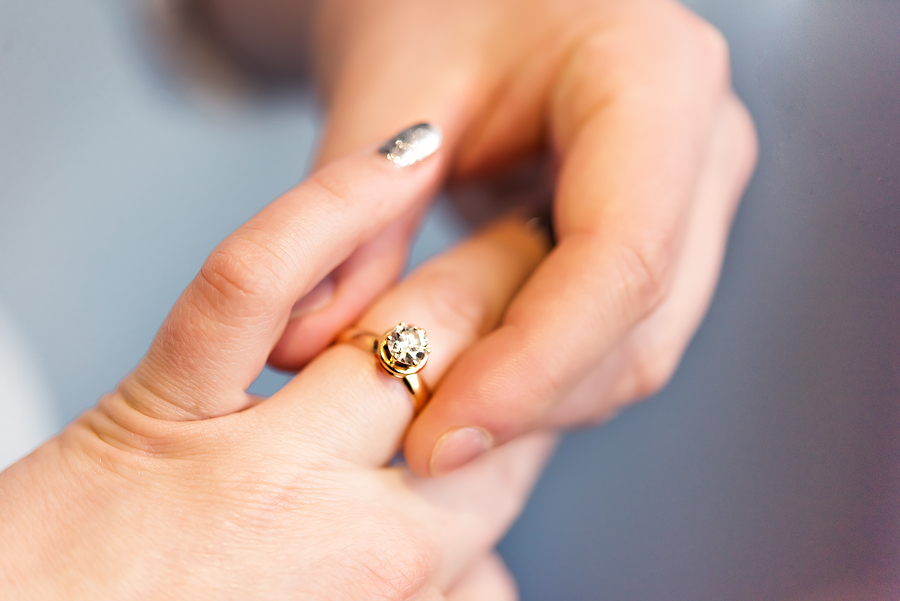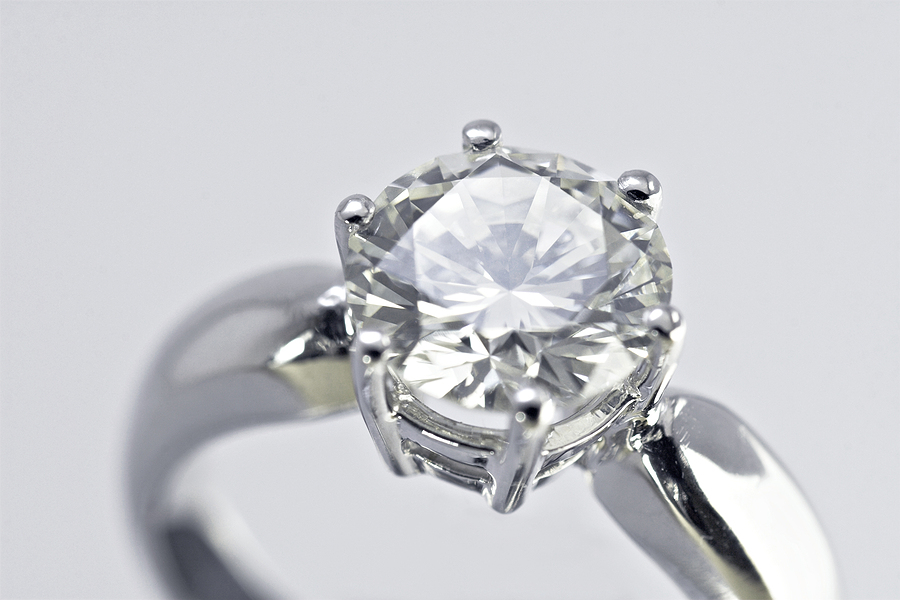Diamonds are priced by what is commonly known as the 4 ‘C’s, that is Carat, Colour, Clarity and Cut. With this article, we intend to give you information about Carat Size, Clarity, Colour & cut so you can make an informed descision about your diamond purchase.
Buying a diamond is a compromise of clarity, colour, carat and cut, against price and most people look to purchase the best diamond they can for the money they have available. Some people would want to purchase the largest diamond they can and are not so worried about the clarity and colour. Other people may want to have the best possible clarity and colour they can have but are not so worried about the size. Other people are totally governed by price.
The best diamond clarity you could possibly buy would be IF which is internally flawless. Colours of diamonds that are colourless are D,E,F and if you were to purchase a IF diamond in a colour D it would be very very expensive because they are very rare, and so very valuable.
Clarity
Diamonds are very rarely completely flawless. Most diamonds contain internal features which are known as inclusions. Diamonds can also have blemishes or surface imperfections. It is these inclusions and blemishes that determine the clarity of each individual stone. In the same way that anything natural has its own print so do diamonds. Many inclusions (which show as small black dots under magnification) are not visable by the naked eye.
The clarity of a diamond as well as its colour, the quality of the cut and the carat weight will directly affect its rarity and value. Generally speaking, the clearer the diamond, the rarer and more valuable it will be. An IF (internally flawless) diamond will be more expensive than an SI grade diamond of the same weight. Many rings that are sold on the high street are I grade diamonds and most people are very happy with their stone.
No two diamonds ever have exactly the same inclusions or other clarity characteristics. This inclusion ‘fingerprint’ enables the specific identification of individual diamonds. I would liken the diamond to a pebble on the beach, both are totally natural and you get some pebbles that are rounded and smooth with few marks on them, and others which are not so smooth with black marks on them. Scientists have also been using inclusions to determine how diamonds are formed.
Inclusions can sometimes be removed from diamonds, providing they are close to the surface. However this does involve re-cutting the diamond which will reduce its overall carat weight. Blemishes such as surface scratches, however, can generally be removed by jewellers without affecting the stone’s value.
Diamonds can also be enhanced which means that a laser would be used to remove any large inclusions and improve the clarity. This is a recognised technique and the it is important to emphaise the diamond remains a natural diamond with all the characteristics of a natural diamonds. It is obviously essential that the seller advises the buyer that the diamond has been enhanced.
Remember that flawless diamonds are extremely rare. It is quite possible to spend a whole lifetime working with diamonds without ever coming across a completely flawless stone.
This table shows the different clarities under a magnification of 10.
Flawless (FL)
A Flawless diamond shows no blemishes or inclusions under 10 x magnification.
Internally Flawless (IF)
To reach this classification, a diamond must have no inclusions under 10 x magnification but may have some minor blemishes like surface grain lines. A Lapidarist can sometimes remove these lines and repolish the diamond so that it becomes Flawless.
Very, Very Slightly Included (VVS1 and VVS2)
These diamonds contain extremely tiny inclusions that are difficult to see under 10 x magnification. Usually the inclusions appear like pinpoints or tiny cavities.
Very Slightly Included (VS1 and VS2)
These Diamonds contain minor inclusions that can be observed under 10 x magnification by experienced jewellers. An inexperienced eye would be very unlikely to spot them under this magnification. Normally VS Diamonds have small included crystals or small clouds.
Slightly Included (S11 and S12)
Somewhat included Diamonds contain incorporations recognizable under 10 x amplification.. Typically these inclusions are clouds, crystals, knots, cavities or feathers.
Included (I1, I2 and I3)
In this category, inclusions are obvious under 10 x magnification. The diamonds may contain large feathers or large included crystals. Usually this kind of inclusion affects transparency and brilliance
Colour
The colour grading of a diamond runs in an alphabetical scale with colours D,E, and F being colourless. These three grades show no hint of any colour in the stone and as a result are the more expensive. The next bracket of colours G,H,I and J are classed as near colourless. These diamonds look colourless to the naked eye with a faint hint of yellow colour when examined under a microscope. As these diamonds are not classed as completely colourless they are less expensive than those graded D,E,F and are a viable option for the smaller budget. When the diamond is set the diamonds G,H,I and J look colourless
Diamonds graded with a colour K-M are classed as faint yellow and have a slightly more noticeable yellow tint than the higher grades. The prices of this grade are lower but bear in mind the colour is noticeably faint yellow.
The colours graded from N – Z have a very definite hint of yellow to them but are not classed as Fancy Yellow Diamonds.
Carat
The size of the larger diamond chosen is a matter of taste more than cost. A large stone is the most visible statement of value.
This gives leave to those of us who are somewhere in the middle to choose a large or small stone according to our taste, preferences and pockets.
The diamond you buy will look according to its specification as described in the Diamond Information.
Please use the clarity, color and size charts provided in order to get an idea of what your diamond will look like, bearing in mind that no two natural diamonds look alike.
The photo displayed in this listing is only to illustrate the Jewellery design and does not represent the quality of the diamond that you buy.
Fancy Diamonds
Fancy coloured gemstones are available and growing in popularity due to the unused and vivid colours available. Blue, champagne, pink and canary yellow diamonds. Although these diamonds are far from the colourless grades of D, E, F they are not much cheaper than those graded with colours G-J. These colours stones can be used to produce fanastic, eyecatching jewellery perfect for someone that enjoys being a little different or who does not want a completely traditional ring.
Cut
The sparkle of a diamond is determined by the cut. The benefit of good cut is visible on careful examination without magnification. CUT refers to the proportions, symmetry and finish of a polished diamond. To get from the raw diamond to the cut gemstone requires the gifted hand of an ace shaper. The better the CUT extents, the better the diamond handles light to make shimmer. In this way CUT is the absolute most significant factor influencing a diamond’s radiance, splendor and visual fire as outlined with the accompanying charts for a round brilliant cut stone: An all around cut diamond mirrors greatest light thus shimmers the best. Shallow-cut and profound cut diamonds let the light getaway along the edges or base.
There are few people who think black diamonds are fake diamonds. If you think the same, then you are absolutely wrong because black diamonds are as real as black diamonds. Check out black diamond shop.
Image Source: BigStock.com (Licensed)
Related Categories: Fashion & Gear, Reviews








